The Chameleons of Durban.
People often speak of how common chameleons used to be in Durban, often saying they’ve not seen chameleons in years. The truth is there are many factors which affect negatively chameleons. From pesticides, domestic animals decimating local populations causing these animals to become “locally” extinct in suburban gardens to some extent.
One of the major issues facing chameleons in habitat loss, clearing vast sections of natural habitats for building houses, shopping centres and making new roads have a drastic effect on these animals. By fragmenting habitats the natural green corridors which allow chameleons use as passageways to move between different biomes and unfavourable conditions are decreasing.
So what happens and how does this affect chameleons in general? When an area is cleared of vegetation and those animals are not killed in the process of earth moving equipment or killed out of fear by workers these animals flee and attempt to crossroads and many are killed before reaching the other side.
There are two species of chameleons found in Durban which are:
Bradypodion melanocephalum – KwaZulu Dwarf Chameleon / Black-Headed Chameleon
Chamaeleo dilepis – Flap-Neck Chameleon
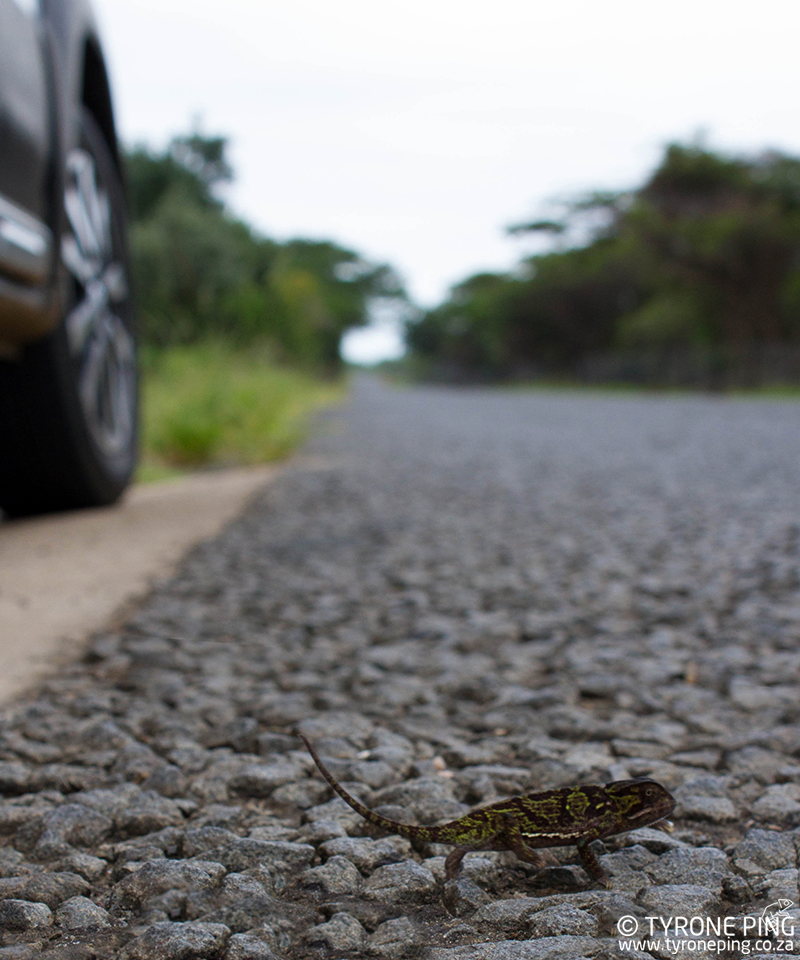
A young Flap Neck Chameleon as it crossing a road between two isolated patches of suitable habitat.
Another oversight for the lack of chameleons on suburbia is the lack of suitable habitat. Chameleons cannot thrive in the typical suburban garden made up of vast expanses of neatly manicured lawns with small isolated shrubs and bushes. Chameleons, in general, need to have free access between vegetation types and are unlikely to thrive in one or two small plants for an extended period. Another major factor contributing to the demise of the suburban chameleon population is large walls (which they’re unable to transverse) and electric fences. Many chameleons die at the expense of the homeowners’ security fences.
Bradypodion melanocephalum – KwaZulu Dwarf Chameleon / Black-Headed Chameleon
The KwaZulu Dwarf Chameleon or Black-headed Dwarf Chameleon or as it is commonly called due to the holotype specimen becoming discoloured between its collection and description in Europe by Gray in 1865.
These small brown nondescript chameleons adults averaging only around 11cm in length are listed as “vulnerable” in Suricata 1: Atlas of the Red List of the Reptiles of South Africa, Lesotho and Swaziland due to habitat fragmentation and habitat loss. These animals can be found throughout the greater Durban area in suitable habitat. From the North of Durban around Ballito, to the South of Durban on the Bluff and inland as far as Hillcrest in the West.
The KwaZulu Dwarf Chameleon can be found in two distinct habitats which include fine networks of vines, such as the invasive Baloon Vine and many other forms of creeping vegetation which form dense networks around larger trees, reeds beds and shrubs on the roadside verges.
Another biome where these animals are more well known is tall dry grasses along the roadside and natural grasslands, in particular, more to the west and south of Durban. They are generally not found of large trees and bushes as they are somewhat restricted by the ability to grasp on larger diameter perches.

Bradypodion melanocephalum
KwaZulu Dwarf Chameleon / Black-Headed Chameleon. From Glen Hills, Kwa-Zulu Natal.
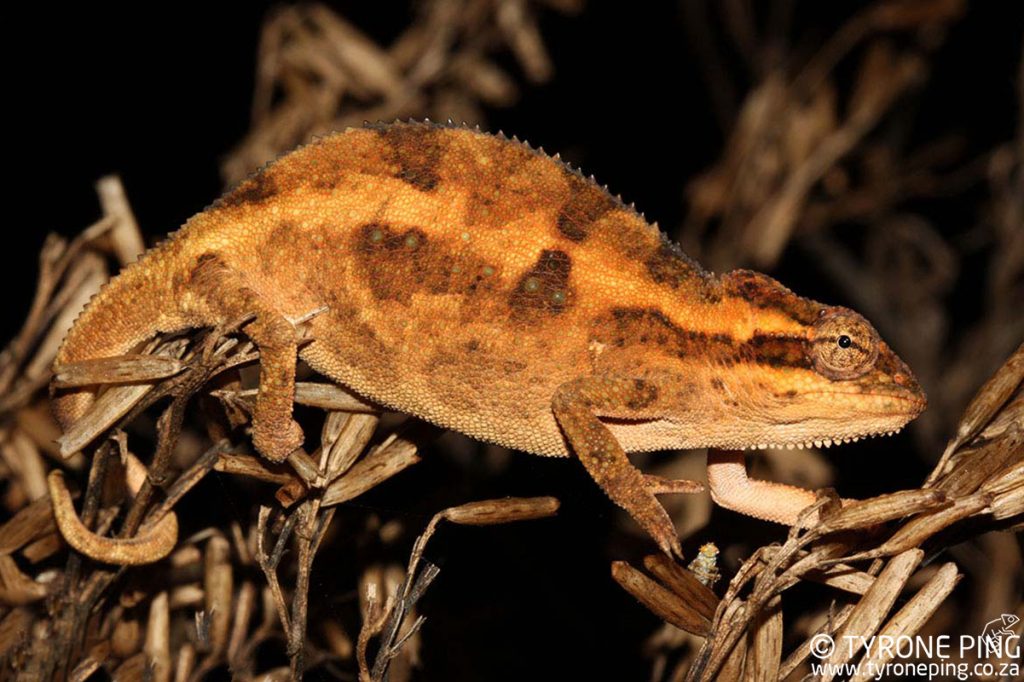
Bradypodion melanocephalum
KwaZulu Dwarf Chameleon / Black-Headed Chameleon. From Mt Moreland, Kwa-Zulu Natal.
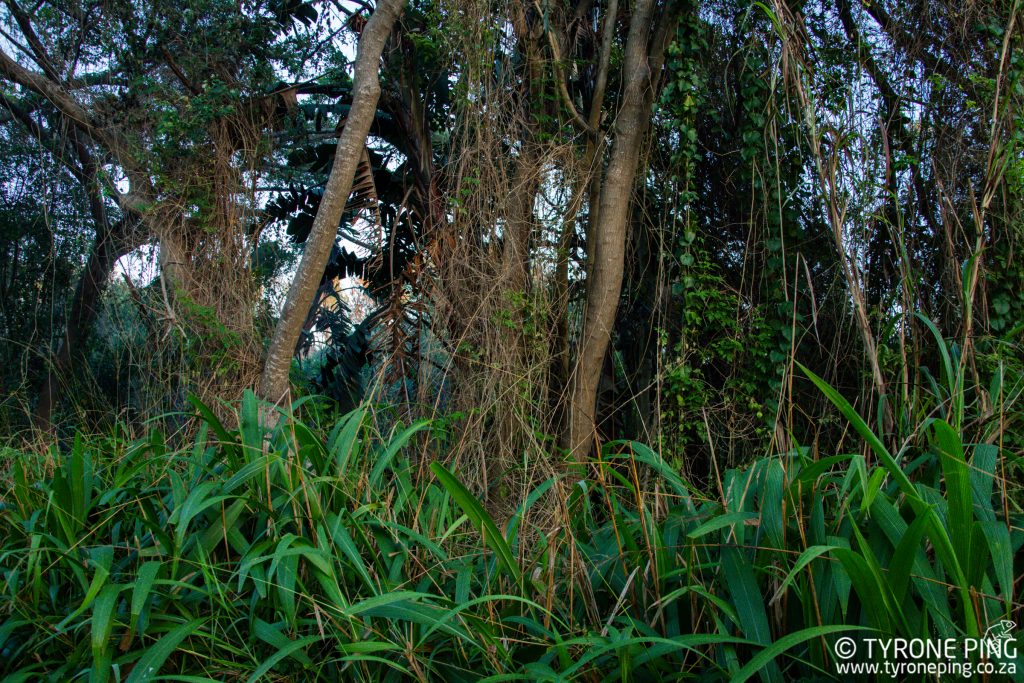
The convergence of habitat of KwaZulu Dwarf Chameleon.
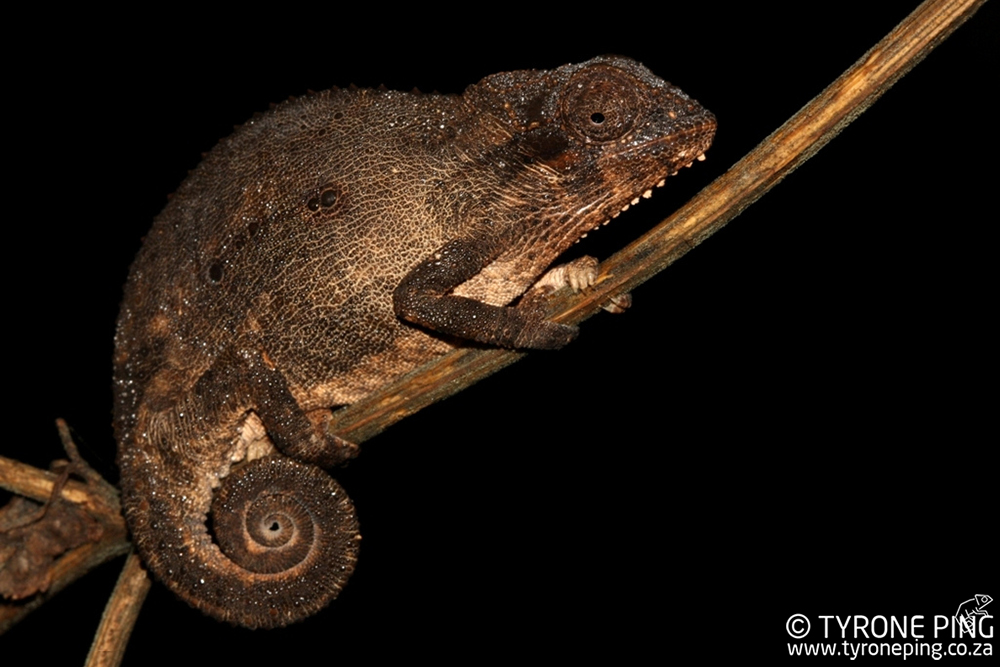
Bradypodion melanocephalum
KwaZulu Dwarf Chameleon / Black-Headed Chameleon. From Westville, Kwa-Zulu Natal.
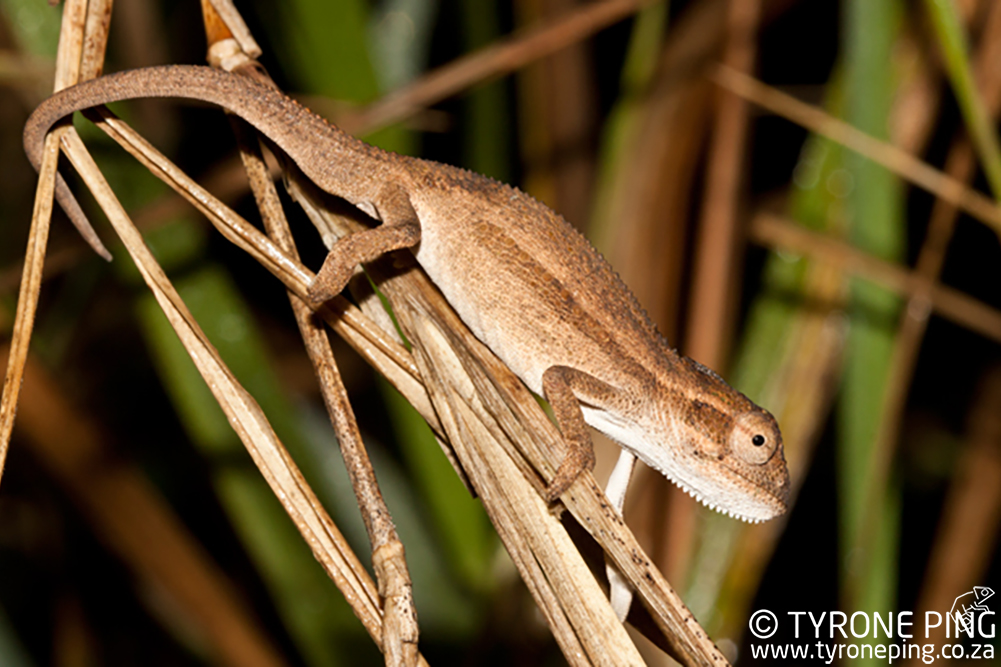
Bradypodion melanocephalum
KwaZulu Dwarf Chameleon / Black-Headed Chameleon. From Ballito, Kwa-Zulu Natal.
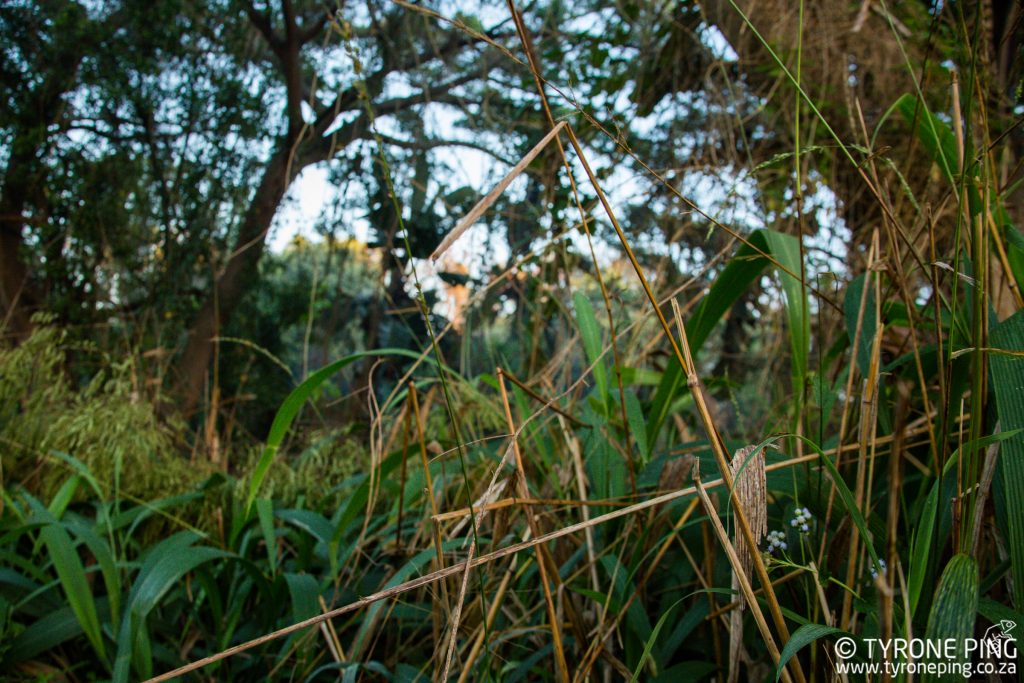
Typical habitat of KwaZulu Dwarf Chameleon.
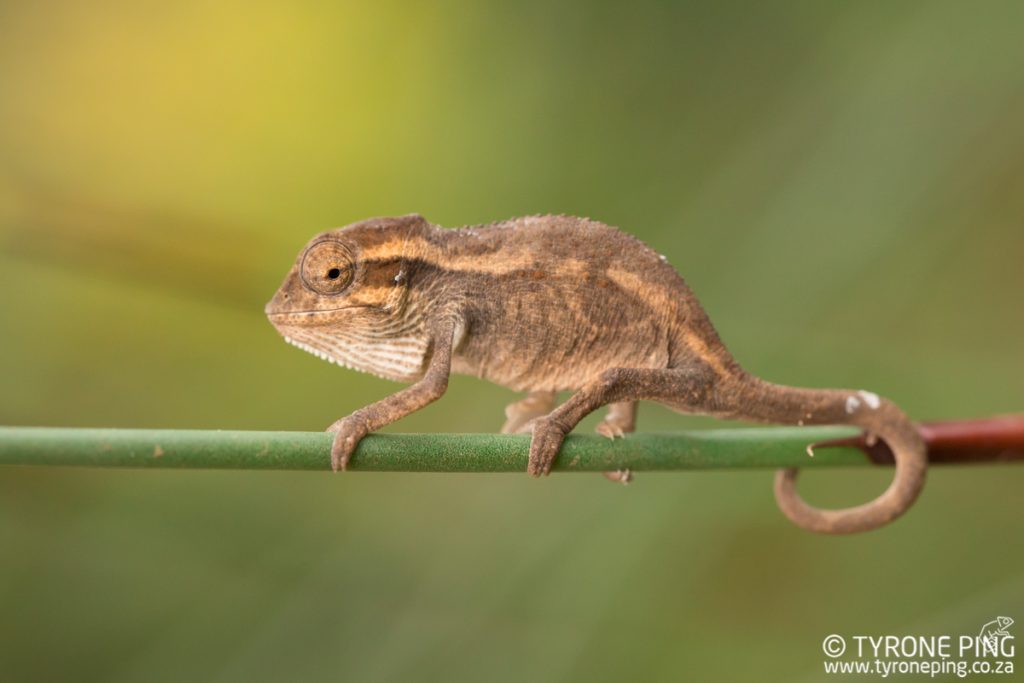
Bradypodion melanocephalum
KwaZulu Dwarf Chameleon / Black-Headed Chameleon. From Glen Anil, Kwa-Zulu Natal.
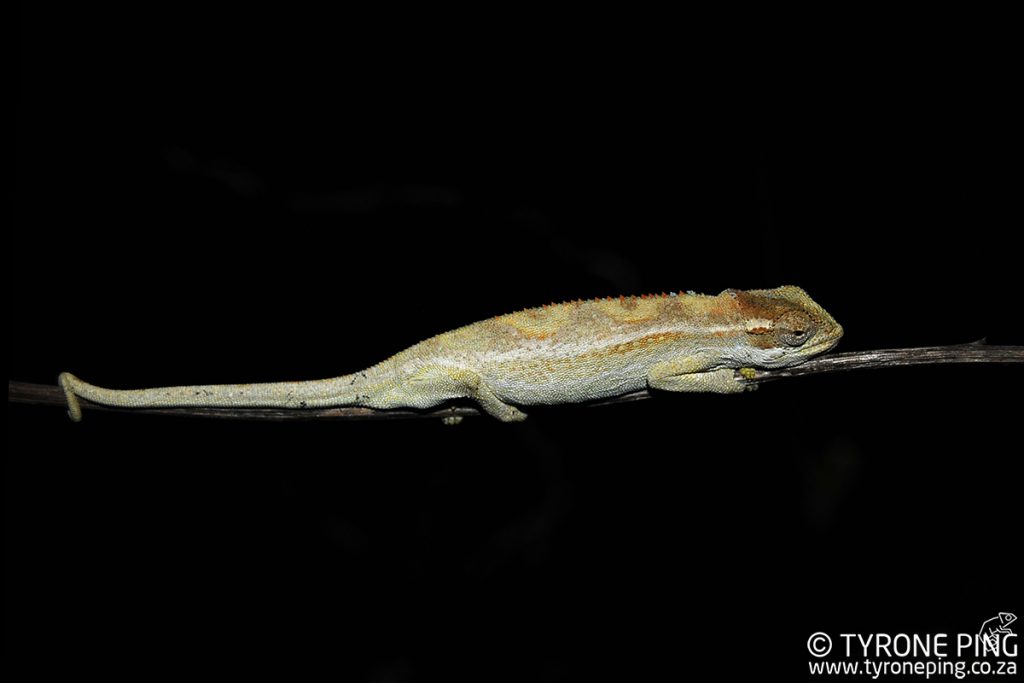
Bradypodion melanocephalum
KwaZulu Dwarf Chameleon / Black-Headed Chameleon. From Queensborough, Kwa-Zulu Natal.
Chamaeleo dilepis – Flap-Neck Chameleon
The Flap-neck Chameleon is one of the largest chameleons in South Africa growing to around 30 cm from snout to tail. Described by Leach in 1819, these chameleons have a much larger distribution in the greater Durban area and seem far better adapted to suburban gardens than the KwaZulu Dwarf Chameleon.
A vibrantly coloured emerald to lime green sometimes pale yellow chameleon with a distinctive white partially stripe made up of enlarged gulars on either side of the chameleon.
The Flap-neck Chameleon can be found in a far greater array of habitats than the much smaller KwaZulu Dwarf Chameleon. Adults favour dense bushes and trees while subadults and hatchlings favour tall stemmed grasses and reeds often along road verges. Typically high concentrations of these chameleons can be found in vegetation bordering watercourses due to the higher array of available insect mass.
With similar threats facing the Flap-neck Chameleon in suburban gardens the lack of suitable corridors to allow free movement between vegetation and electric fences which kill many of these chameleons.
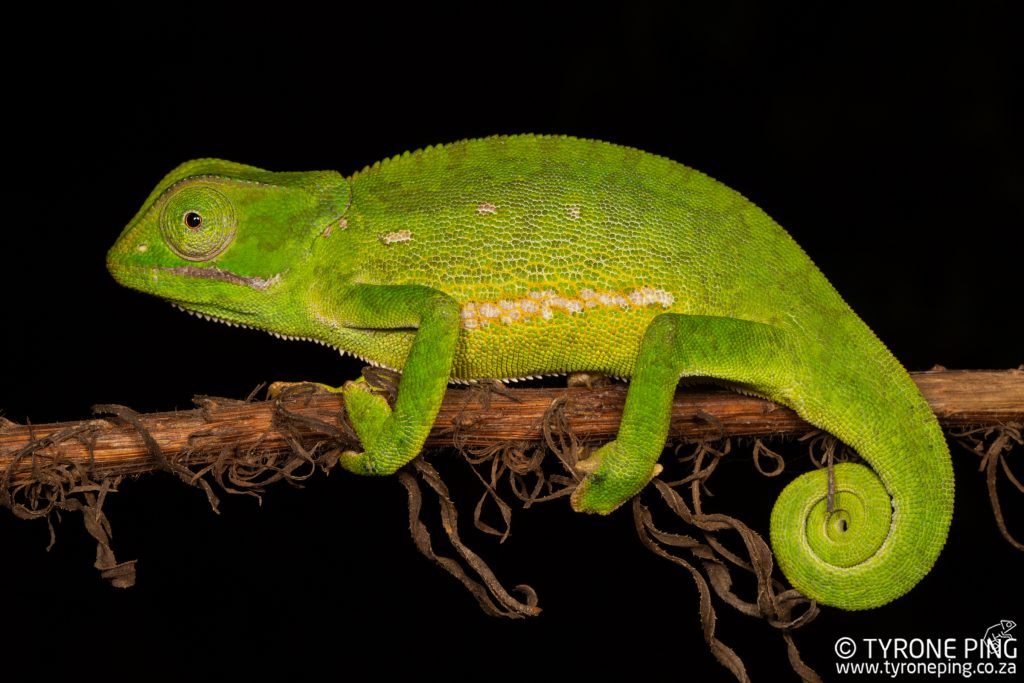
Chamaeleo dilepis
Flap-Neck Chameleon. From Umhlanga, Kwa-Zulu Natal.
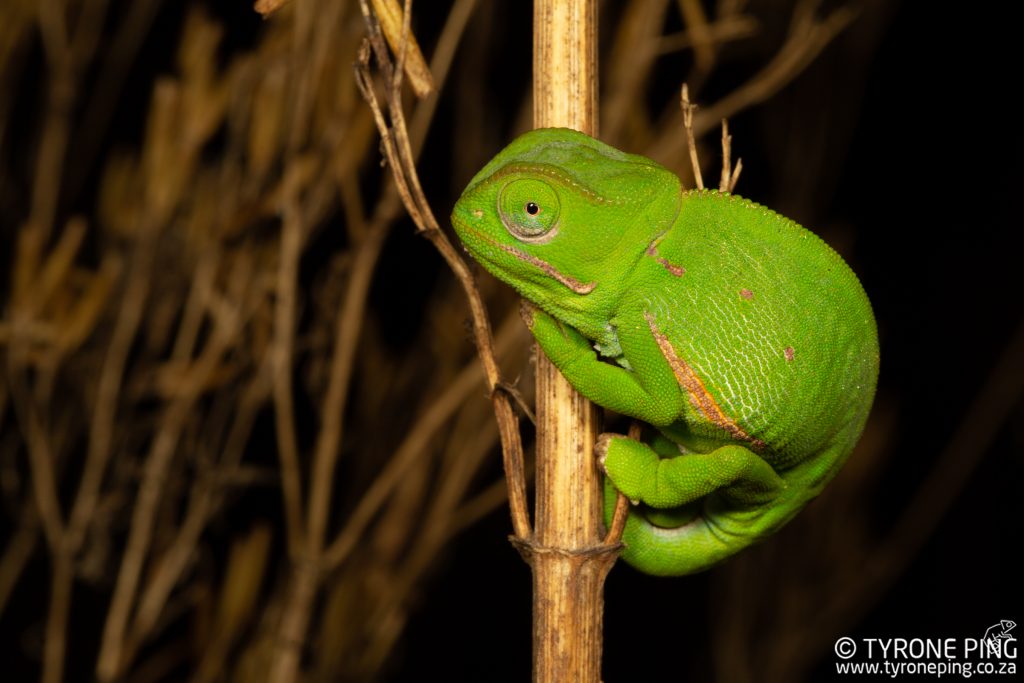
Chamaeleo dilepis
Flap-Neck Chameleon. From Umhlanga, Kwa-Zulu Natal.
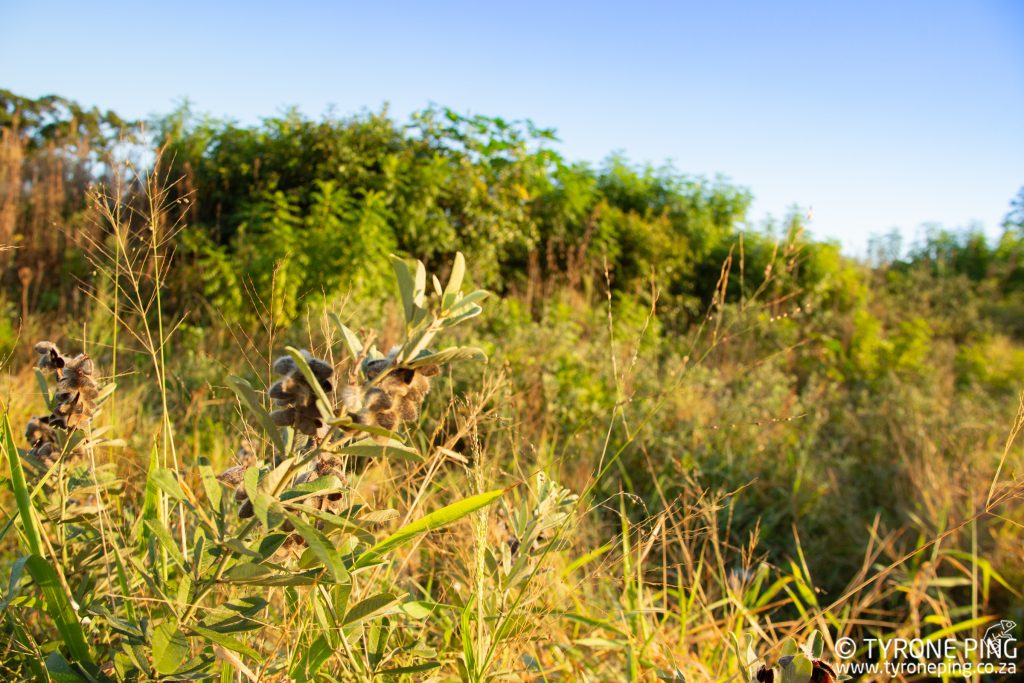
Typical habitat of Flap-Neck Chameleon.
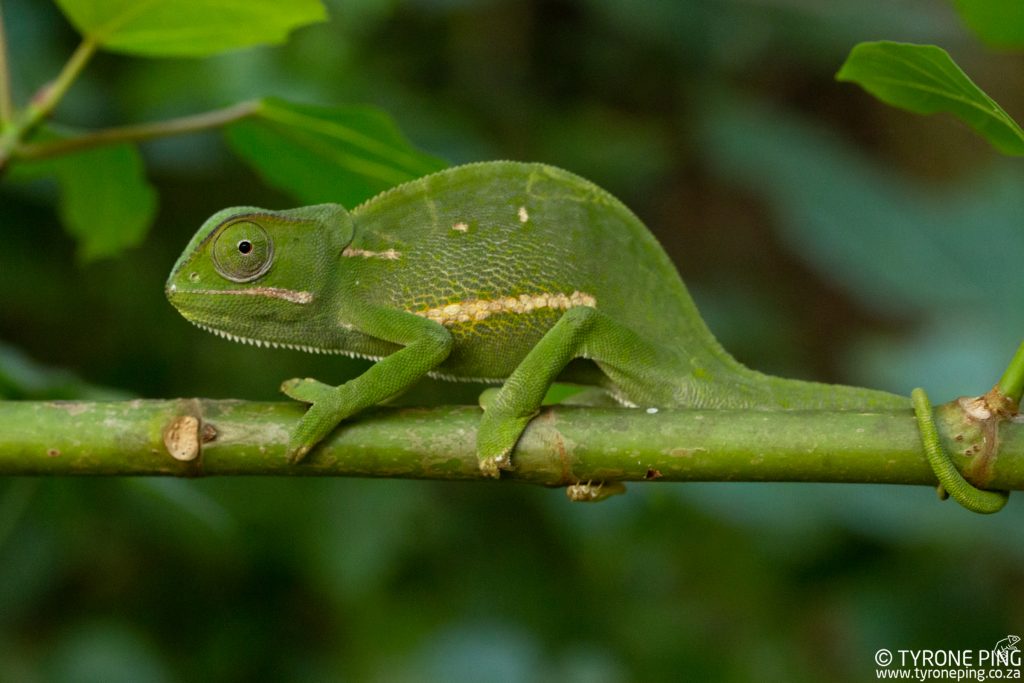
Chamaeleo dilepis
Flap-Neck Chameleon. From Prestondale, Kwa-Zulu Natal.
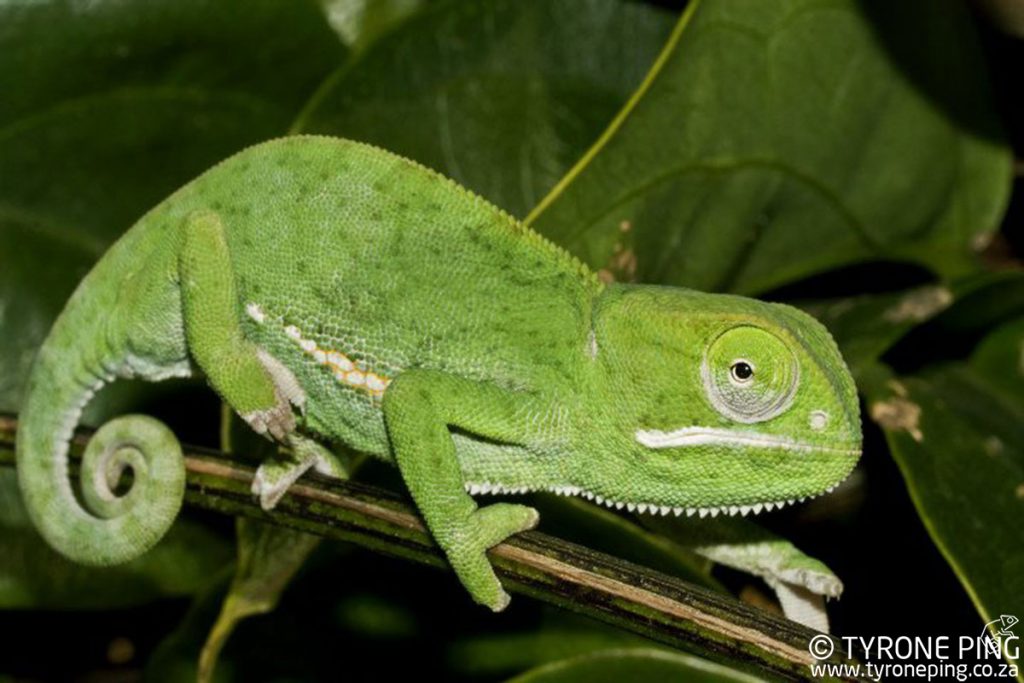
Chamaeleo dilepis
Flap-Neck Chameleon. From Durban North, Kwa-Zulu Natal.
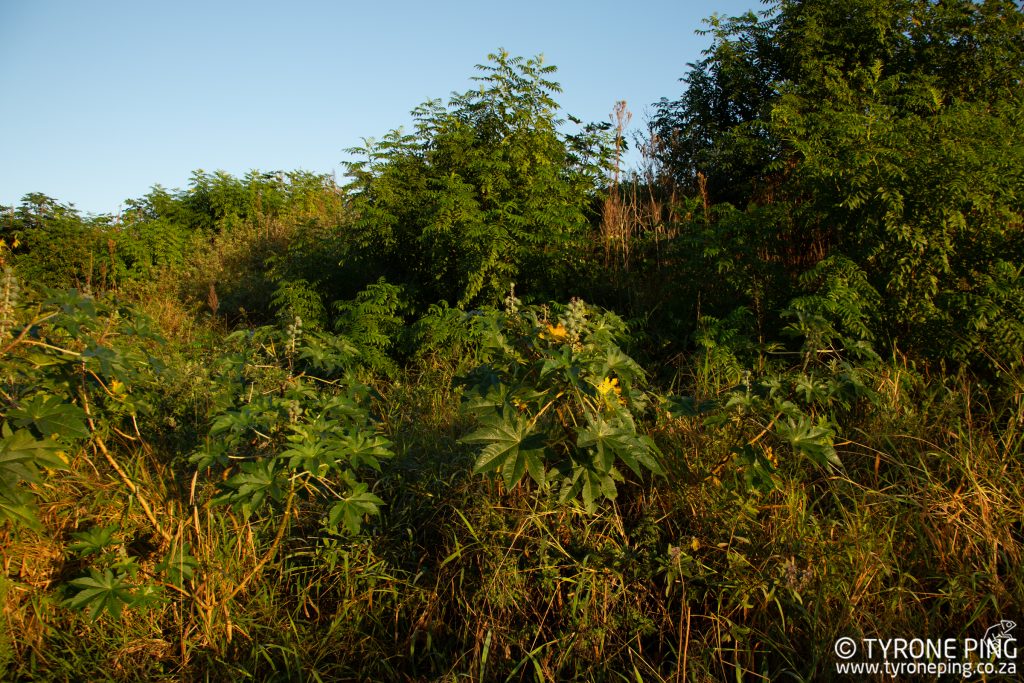
Habitat of Flap Neck Chameleon where vegetation has been cleared and replaced with invasive weeds.
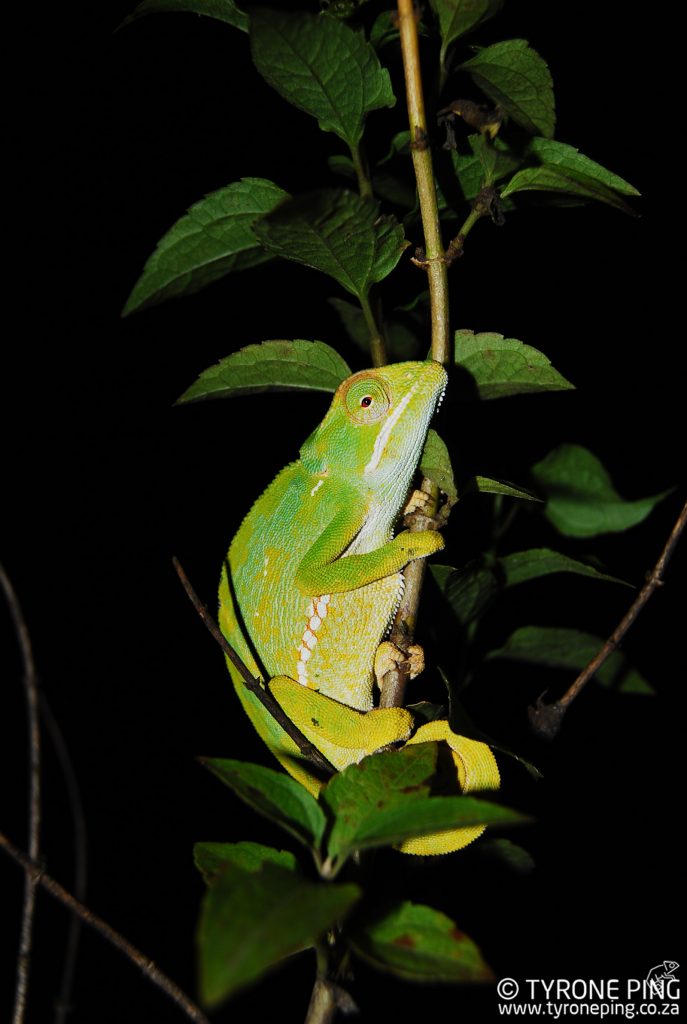
Chamaeleo dilepis
Flap-Neck Chameleon. From Westville, Kwa-Zulu Natal.
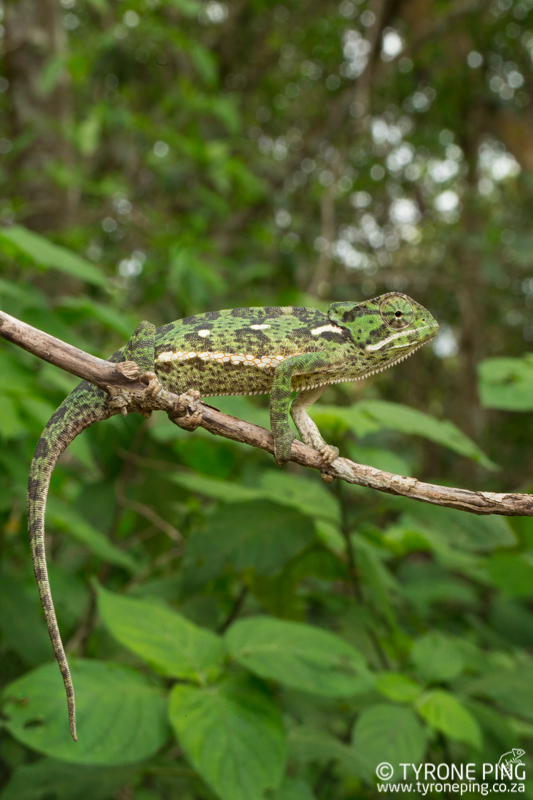
Chamaeleo dilepis
Flap-Neck Chameleon. From New Germany, Kwa-Zulu Natal.
Unfortunately, these animals are often found crossing roads and people have a tendency to “rescue” them by taking them home and putting them on a pot plant in the home near a window thinking that is sufficient sunlight – these animals soon die from dehydration and stress.
When removing trees and shrubs from your garden it is best practice to leave branches and cuttings for a few hours before removing them and dumping/mulching them as this gives the chameleons which may be between the branches time to move off and find a new place to live.
Newly hatched Flap-neck Chameleons.
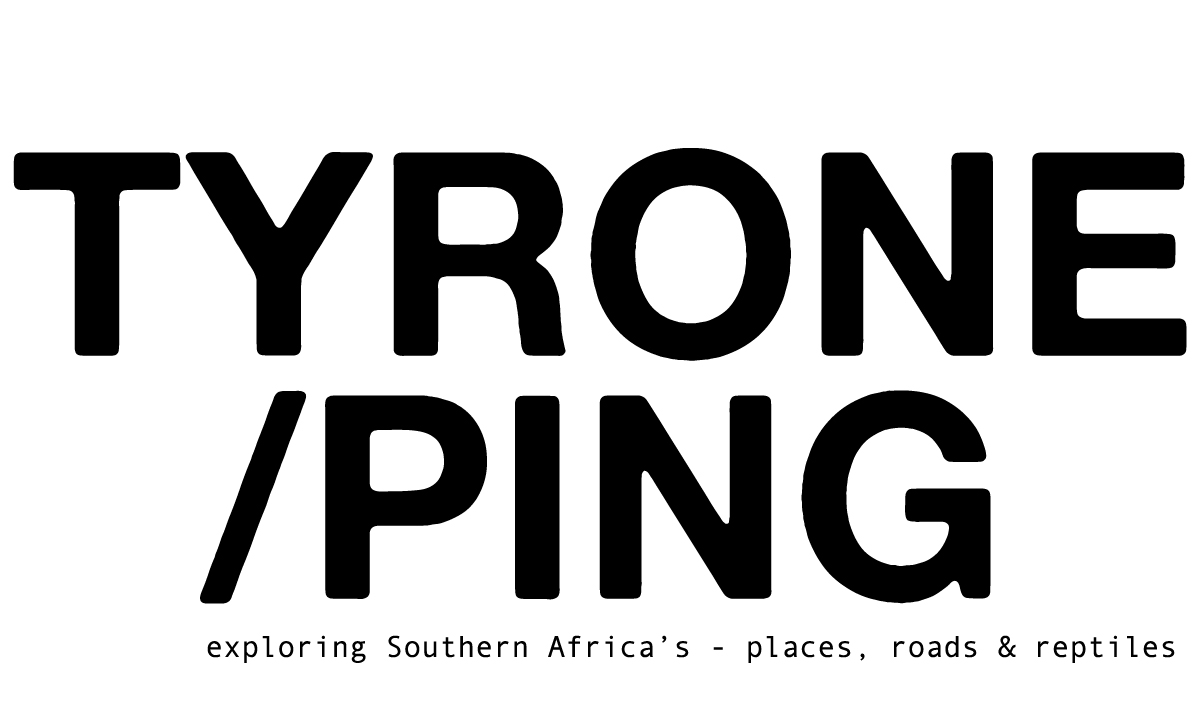
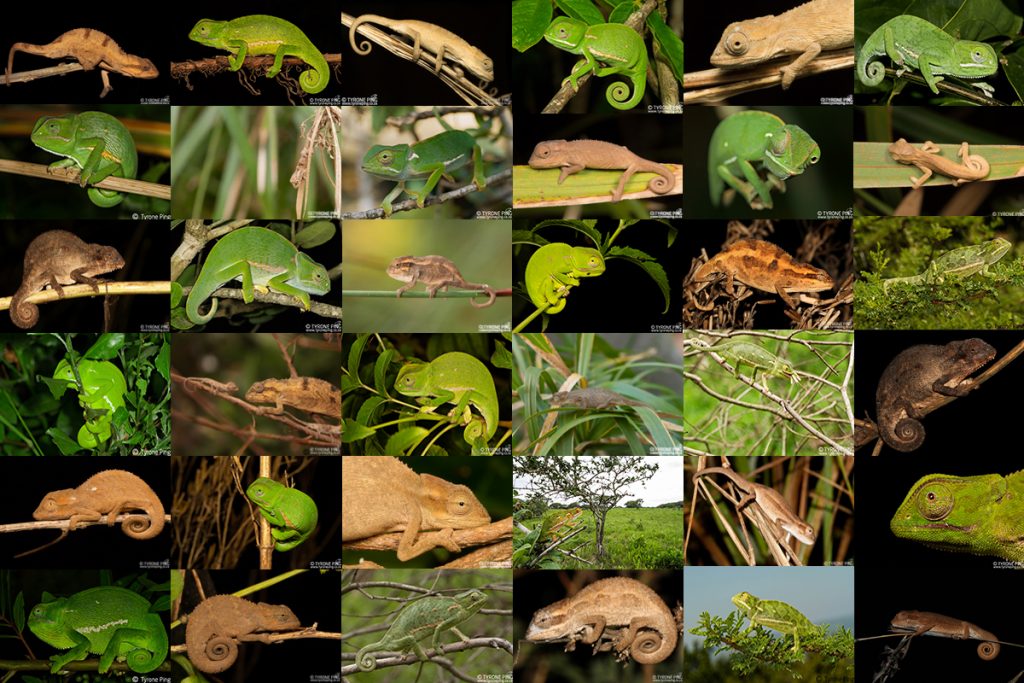
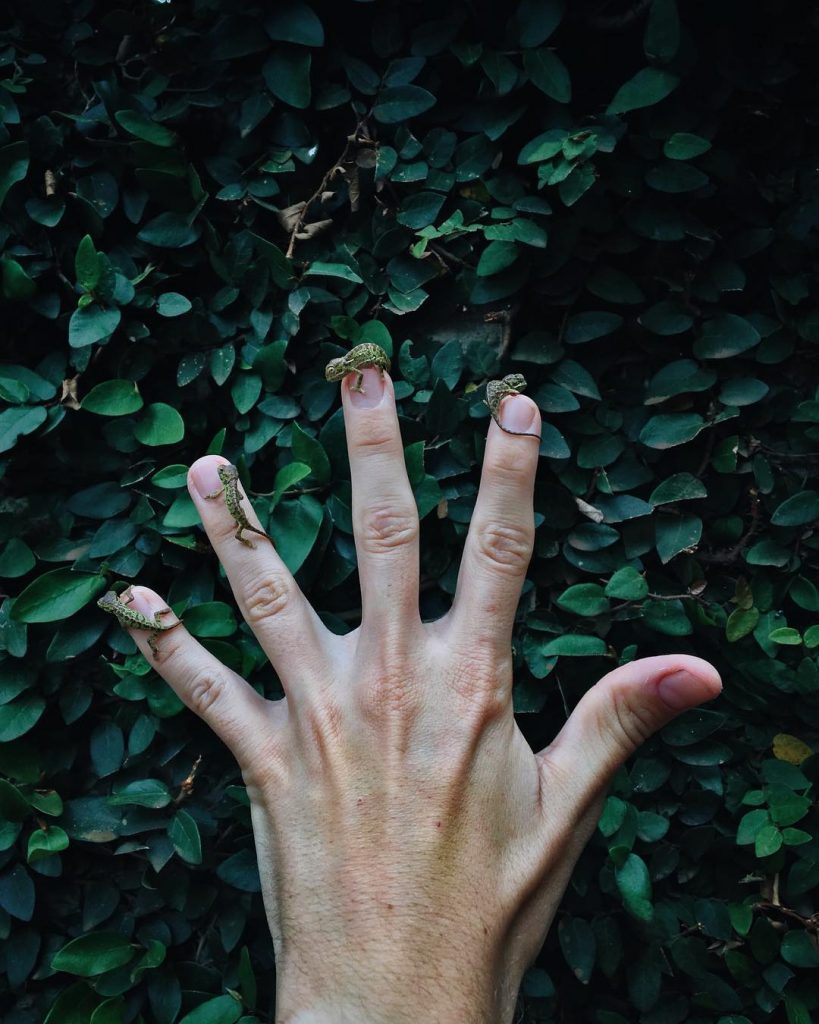
We had a chameleon lay eggs in our garden on April. I think it was a flap-neck chameleon. When should I expect the babies to hatch. I did take some videos
Hi Sandy, it maytake up to 12 months to hatch.
Would love to see the video you can perhaps drop me an email on contact@tyroneping.co.za
Hi there. I came cross a Chameleon in my garden today. It looked like it was covering a hole in the grass. I think it may have laid eggs. I have a short video on my phone of this if you’re interested.
Great, likely a Flapneck Chameleon as they lay eggs throughout the summer.